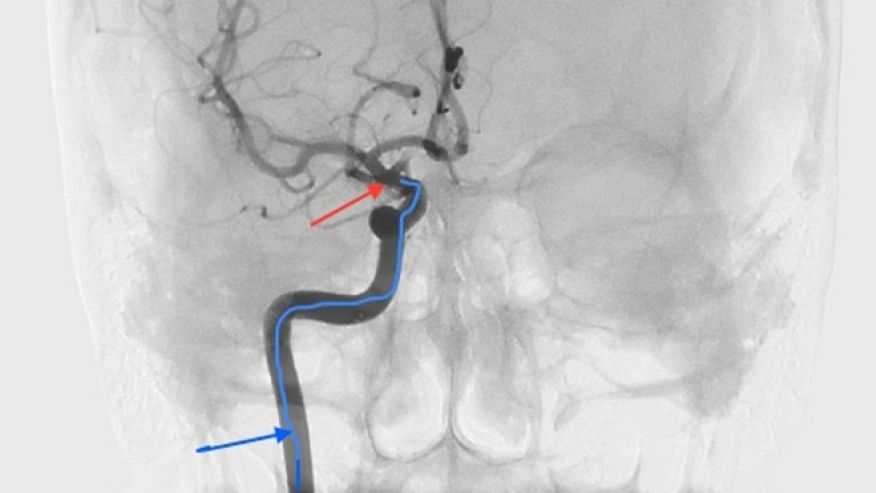Scientists from the Stanford University School of Medicine successfully transplanted modified, adult stem cells into the brain of patients who suffered from chronic strokes.
Not only did the stem caused no problems, but they also substantially reverted the permanent effects that are usually present after having a stroke. Dr. Gary Steinberg led the research team; they chose 18 patients and directly injected stem cells into their brains. The resulting paper was published on-line in Stroke on June 2, 2016.
Dr. Gary Steinberg led the research team; they chose 18 patients and directly injected stem cells into their brains. The resulting paper was published on-line in Stroke on June 2, 2016.

He is also a highly trained neurosurgeon specialized in many things, strokes included. He and his team proposed a very revolutionary idea, injecting adult human stem cells in the brain of people with chronic stroke to try and stimulate the damaged parts of their cerebrum.
Frankenstein’s surgery
To carry on with their project, the research team posted online the details of the experiments to attract volunteers. Around 379 “curriculums” were submitted, and the researchers chose 18 patients; they were all around 61 years old. By the time of the study, all the 18 participants had been suffering from chronic strokes for at least one year.
Wnt3a Secreted by #Mesenchymal #StemCells Is Neuroprotective & Promotes Recovery after #TBI. https://t.co/MFudOtCgBG pic.twitter.com/yXJlbbgEZW
— Stem Cells (@StemCellsJournl) June 2, 2016
Dr. Steinberg personally conducted 12 of the 18 surgeries. Soft anesthesia was used to make the patients numb without making them lose conscience. Then, the surgical team needed direct access to the brain, so they cut some skin and drilled the skull to make a little hole, big enough to let a syringe through. Finally, they injected the modified human stem cells into the brain’s cortex. The other six procedures were carried out by specialists at the University of Pittsburg.
“There are close to 7 million chronic stroke patients in the United States,” Steinberg said. “If this treatment really works for that huge population, it has great potential.”
The implications
Strokes also go by the name of cerebrovascular accident (CVA) cerebrovascular insult (CVI) or brain attacks. There are two types of strokes; the hemorrhagic which is caused by extreme bleeding, and the ischemic. The latter is the more common of the 2, and it happens when there is not enough blood going into the brain, and the lack of oxygen can permanently damage cells.
After suffering a CVA, people can find themselves unable to move parts of their body. Losing the ability to speak or having difficulties to understand is common too, accompanied by vision loss and dull headaches. CVAs appear quickly after a stroke, but if the symptoms last less than a couple of hours it is called transient ischemic attack (TIA), and people have the chance to take counter measures. However, if the problems remain for more than six months, they usually stay forever.
The reason for this is brain damage. When the excess of blood or lack of it disrupt cerebral cells, they go unresponsive thus altering the function of the whole organ significantly. Depending on the region that was affected, people who suffered from a CVI will have different problems.

But Dr. Steinberg and his team might have brought a permanent solution for this life-lasting problem. After receiving the stem cells into their brains, all the 18 participants of the experiment went through incredible improvement. Some of them started moving limbs they had given up long ago.
Results of the experiment can mean a lot of things, but among them we have two scenarios; cerebral cells do not completely die after a brain attack or they die, but modified stem cells can bring them back to life. Both options sound like they came out of a science-fiction show, and even if the answer is something else, doctors have to revisit what they know about the brain capabilities, again.
Stem cells
Stem cells are biological cells capable of mitosis, a process in which an organism eats until it has enough energy to divide itself. These self-multiplying cells can be found located in a lot of mammals under two types; embryonic cells stem cells and adult stem cells. They help the body to repair itself. In other words, if you cut your finger, these little buddies, along with other elements, create more tissue that helps to cover the hole.
The ones used by the researchers is named SB623, a form of modified adult stem cell which can be easily extracted from bone marrow. Apparently, these little builders got into the 18 participants brain and re-activated the self-repair process in the brain which is curious because the researching team said they only lived in their new host for up to 2 months.
However, the recovery in the patients remained for up to 2 years. The results were particularly remarkable because all the participants were at least 60 years old. And it has been reported in the past that seniors usually respond poorly to new methods.
Improving cell transplantation after spinal cord injury: When, where and how? (ScienceDaily & PLoS Biol)… https://t.co/3QzGGHUxIC
— Stem Cells Portal (@StemCellsPortal) June 1, 2016
Not everything was rainbows and unicorns. More than 70% of the participants complained of strong headaches, but the specialists say it was caused by the process to hold the patients still and nothing else.
Dr. Steinberg and his team are preparing for a larger study. He said, “this was just a single trial, and a small one.” The research team will be looking for more candidates on-line.
Source: Daily Mail
